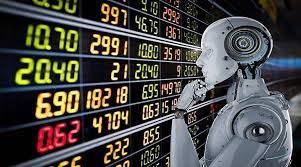In the ever-evolving landscape of financial markets, the emergence of automated trading systems has significantly transformed the way traders approach the forex market. Among these innovations, forex robots stand out as powerful tools capable of executing trades with precision, speed, and efficiency. These automated systems, driven by forex robot algorithms, have become indispensable companions for both seasoned traders and newcomers alike.
What Are Forex Robots?
Forex robots, also known as expert advisors (EAs), are software programs designed to analyze market data, identify trading opportunities, and execute trades on behalf of traders. These robots operate based on predefined rules and parameters, utilizing technical indicators, statistical analysis, and sometimes even machine learning algorithms to make trading decisions.
The Advantages of Forex Robots
- Elimination of Emotional Bias: One of the primary advantages of forex robots is their ability to eliminate the detrimental impact of human emotions on trading decisions. Fear, greed, and indecision often cloud the judgment of human traders, leading to impulsive actions and poor outcomes. Forex robots, on the other hand, operate based on logic and predefined rules, executing trades without succumbing to emotional fluctuations.
- 24/7 Trading: Unlike human traders who are limited by physical and mental constraints, forex robots can operate round the clock, capitalizing on trading opportunities across different time zones and market sessions. This uninterrupted trading capability allows for greater flexibility and responsiveness to market fluctuations, ensuring that no profitable opportunity goes unnoticed.
- Backtesting and Optimization: Forex robots enable traders to backtest their trading strategies using historical market data, providing valuable insights into the efficacy of their approach. Through rigorous testing and optimization, traders can fine-tune their robots to achieve optimal performance under various market conditions, thereby enhancing their profitability and risk management capabilities.
- Speed and Efficiency: With the ability to execute trades in milliseconds, forex robots capitalize on rapid market movements and exploit fleeting opportunities that may escape the attention of human traders. By leveraging automation and advanced technology, these robots ensure swift order execution, minimizing slippage and maximizing profit potential.
- Diversification: Forex robots allow traders to diversify their trading portfolios by deploying multiple strategies simultaneously across different currency pairs and timeframes. This diversification helps spread risk and reduce reliance on any single trading approach, thereby enhancing overall stability and resilience in the face of market volatility.
Challenges and Considerations
While forex robots offer numerous benefits, it is essential for traders to approach their utilization with caution and consideration. Some key challenges and considerations include:
- Over-Optimization: Excessive optimization of forex robots based on historical data can lead to overfitting, where the robot performs exceptionally well on past data but fails to generalize to unseen market conditions. Traders must strike a balance between optimization and robustness to ensure the reliability of their robots in real-time trading.
- Market Conditions: Forex robots may struggle to adapt to sudden shifts in market dynamics or unusual events that deviate from historical patterns. Traders must regularly monitor and update their robots to reflect changing market conditions and ensure continued performance.
- Technical Issues: Like any software-based system, forex robots are susceptible to technical glitches, connectivity issues, and software bugs that may disrupt their operation. Traders should have contingency plans in place to address such contingencies and minimize potential losses.
- Risk Management: While forex robots excel at executing trades with precision, they lack the intuitive judgment and discretion of human traders when it comes
